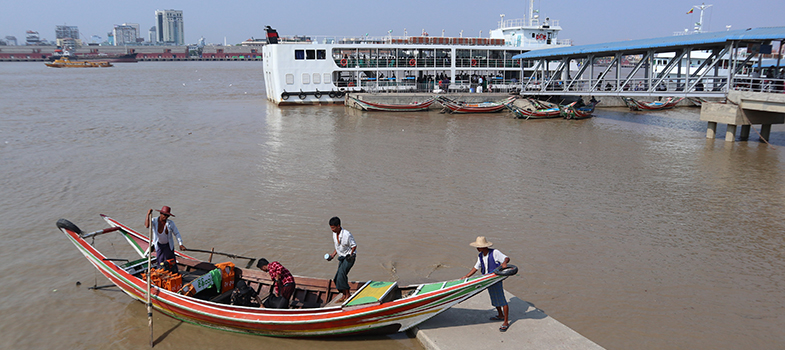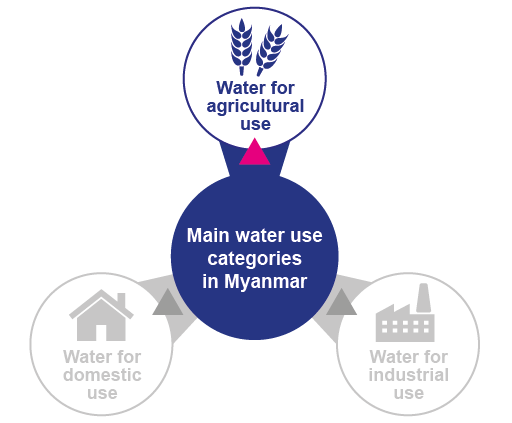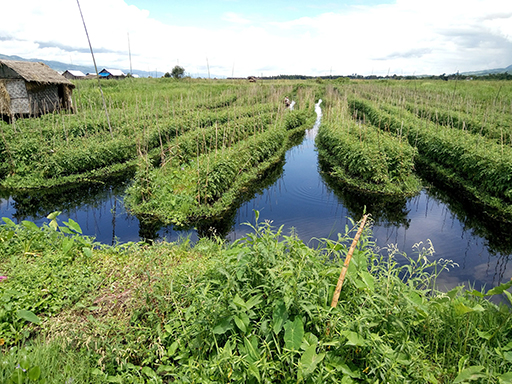2.5 Water for agricultural use
Myanmar is largely an agricultural economy with society and agriculture relying heavily on precipitation. Too much rainfall causes floods and too little rain causes droughts, both of which have a negative impact on agricultural production. Decreased income from the agricultural sector can have many adverse effects on the income of individual farmers as well as the country’s economy.
The Government of Myanmar has largely focused on rural development as the engine of economic growth in the country. This is because over two-thirds of the population live in rural areas and agriculture accounts for 60–70% of employment, largely through subsistence farming. This is much higher than for the average across Asia (ADB, 2017). However, the contribution of agriculture to gross domestic product (GDP) is only 26.7%, down from 57% in 2001, with industry now contributing 34.5% and services 38.7% (ADB, 2017).
Gross domestic product
Gross domestic product (GDP) measures the value of economic activity within a country. GDP is the sum of the market values, or prices, of all final goods and services produced in a country during a given period of time. GDP provides an economic snapshot of a country, used to estimate the size of an economy and its growth rate. It is a powerful number as the success of government policy is evaluated on this measure more than any other.
Question 4
Despite 60–70% of people in Myanmar working in agriculture, it contributes only 26.7% to the GDP of the country. What reasons might explain this?
Answer
Reasons could include agriculture being inefficient, low use of farming technology, growing low value crops, high value industrial enterprises and services that are not labour intensive.
Rice is the main crop and staple food. Other crops include pulses, wheat, cotton and sugarcane. A total area of 18,400 km2 is irrigated in Myanmar, with potential for further expansion lying mainly in upper Myanmar, in the Chin, Kachin and Shan states (FAO, 2011). More than half of the Ayeyarwady delta region, where agriculture is concentrated, is cultivated with rain-fed rice. In the dry season, rice is mostly cultivated in Lower Myanmar using irrigation.
Irrigation is supplied through water diversion with canals, weirs, dams and tanks, and in recent years with substantial development of an infrastructure of water pumps and tube wells. The seasonal rainfall pattern, and its accompanying river flows, largely determines the annual irrigation budget as does the crop water requirement.
In 2017, aquaculture supplied 20% of domestic fish consumption in Myanmar. From 2007–17, fish production in the Ayeyarwady Delta is estimated to have increased by 250%, and the area of ponds in this region, which accounts for 90% of Myanmar's farmed fish, is estimated to have doubled (Beijnen, 2018). Shrimp farming is particularly popular in the delta region.
2.4 Myanmar’s water uses


